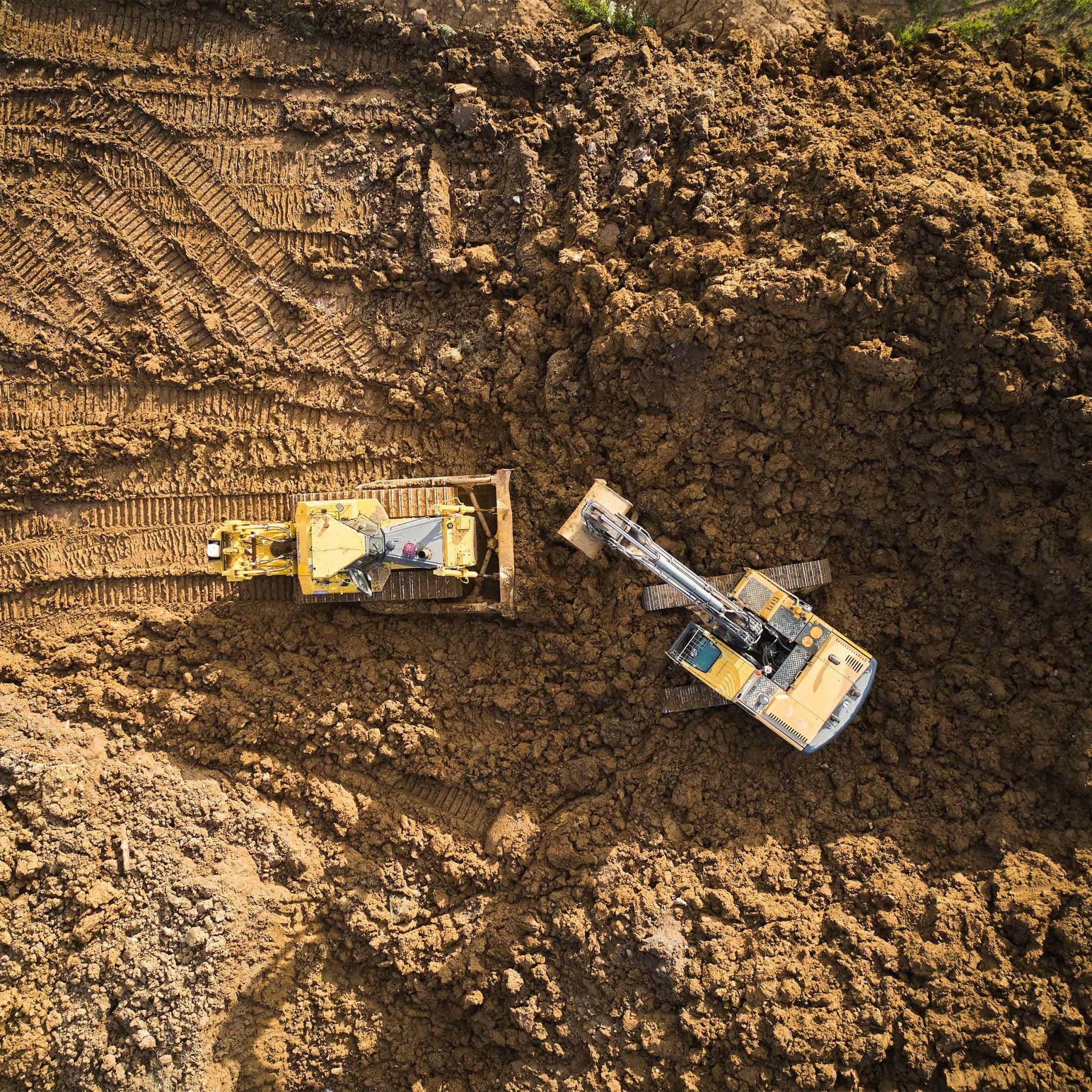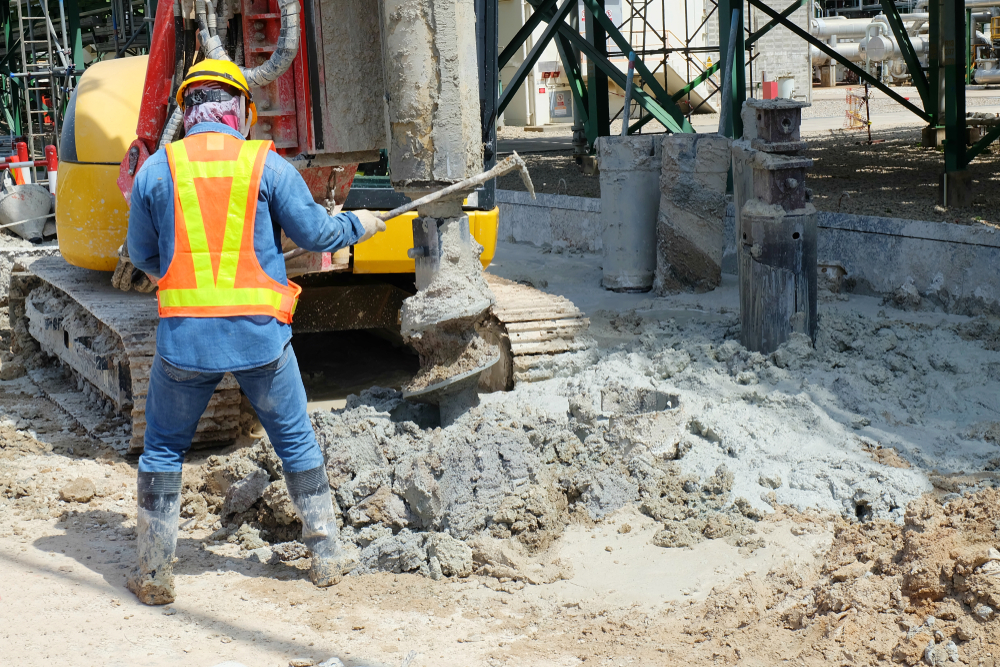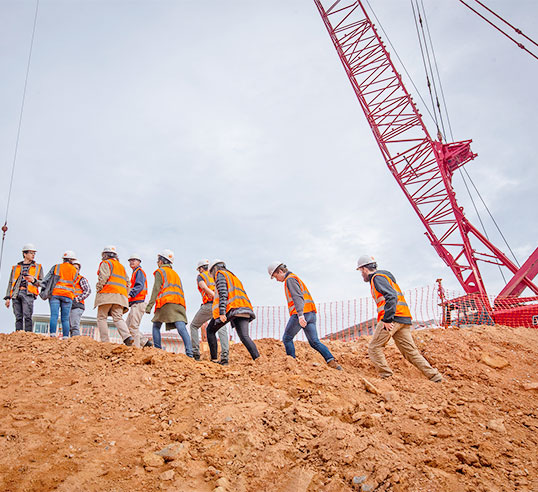Vital Abilities for Flourishing in the Geotechnical Industry Today
Wiki Article
The Vital Contributions of Geotechnical Engineers in Analyzing Dirt Actions and Structure Design for Lasting Facilities Advancement
Geotechnical designers serve as a keystone in the realm of sustainable facilities growth, where their competence in assessing dirt habits straight affects the security and durability of frameworks. By using advanced techniques such as Common Penetration Examinations and Cone Infiltration Testing, they diligently assess soil residential properties, leading to informed choices on structure layout.Function of Geotechnical Engineers

Along with site examinations, geotechnical designers assess potential risks such as dirt liquefaction, slope stability, and groundwater concerns. They apply advanced engineering concepts to develop solutions that alleviate these risks, guaranteeing that layouts abide with appropriate codes and criteria. Their work usually involves cooperation with various other engineering disciplines, architects, and environmental researchers to produce integrated methods to framework development.
In addition, geotechnical designers add to lasting techniques by promoting the usage of products and techniques that lessen ecological influence. Through their extensive understanding of soil mechanics and geology, they play an important role in promoting safe, resistant, and sustainable framework that meets the demands of culture while securing the environment.
Soil Behavior Evaluation Methods
Understanding dirt actions is essential to informed decision-making in geotechnical design, as it straight influences the layout and building and construction procedures. Different evaluation techniques are used to evaluate dirt residential or commercial properties, guaranteeing accurate predictions of its performance under different loading conditions.One primary approach is the Typical Infiltration Examination (SPT), which offers insights into soil density and uniformity through the resistance run into throughout penetration. In A Similar Way, Cone Penetration Screening (CPT) supplies a continuous profile of soil stratification and in-situ toughness criteria, allowing a much more thorough understanding of subsurface problems.
Research laboratory tests, such as Atterberg limitations, unconfined compressive stamina, and triaxial tests, are essential for characterizing dirt actions under controlled conditions. These tests facilitate the decision of vital criteria, including shear compressibility, permeability, and strength.

Structure Design Concepts
Structure layout principles are essential for making sure the stability and durability of structures, as they dictate exactly how loads are sent from the superstructure to the underlying soil. These concepts encompass different considerations, consisting of load-bearing capability, negotiation, and side security. A thorough understanding of dirt mechanics is necessary for geotechnical engineers to assess the interaction in between the dirt and the structure.One secret principle is the suitable option of foundation kind, which might include shallow structures, such as spread footings, or deep foundations, like piles or caissons, depending upon dirt problems and architectural lots - geo tech engineering. The structure should be developed to lessen differential negotiation, which can lead to architectural damage

Sustainable Infrastructure Practices
Exactly how can we properly integrate sustainability right into infrastructure methods? To attain this, it is necessary to adopt an all natural technique that stresses the partnership in between geotechnical design and ecological stewardship. Lasting infrastructure techniques start with comprehensive website assessments, which evaluate soil habits, local ecosystems, and source availability. By understanding these aspects, designers can develop styles that minimize ecological impact while enhancing product usage.Moreover, utilizing innovative building strategies, such as making use of recycled products and low-impact foundations, substantially lowers the carbon footprint of framework jobs. Geotechnical designers play a crucial role in selecting ideal products that enhance toughness and sustainability, such as using geo-synthetics to boost dirt stability and decrease erosion.
In enhancement, lasting facilities practices require recurring tracking and maintenance to make certain that frameworks stay resistant over time. Inevitably, these practices not just contribute to the longevity of frameworks but additionally promote a much healthier environment, straightening infrastructure advancement with broader sustainability purposes.
Study and Applications
Study in geotechnical design supply important understandings into the functional applications of dirt actions and lasting infrastructure methods. One significant example is the construction of the Burj Khalifa in Dubai, where considerable dirt testing and evaluation were conducted to review the distinct challenges positioned by the region's loosened sand and high water table. Geotechnical engineers employed progressed techniques such as vibrant penetrating and cone penetration testing to establish the dirt's load-bearing capability, inevitably resulting in the style of a deep foundation system that supports this famous structure.An additional essential situation is the remediation of the San Francisco-Oakland Bay Bridge after the 1989 Loma Prieta quake. Geotechnical assessments disclosed the requirement for dirt stabilization methods, consisting of grouting and soil nailing, to improve the seismic durability of the foundation. These interventions not only improved the bridge's safety and security yet likewise added to its durability and sustainability.
Such situation research studies exemplify how geotechnical engineers play an essential duty in understanding soil behavior and applying ingenious services to make certain the structural honesty and sustainability of infrastructure jobs. geo tech engineering. Their experience is crucial in dealing with the complicated challenges postured by numerous dirt problems throughout varied geographic locations
Conclusion
To conclude, the contributions of geotechnical designers are essential for the assessment of soil behavior and the design of foundations, which are crucial for sustainable infrastructure advancement. With the application of advanced screening techniques and cutting-edge materials, these specialists ensure the stability and safety and security of structures while reducing environmental effects. The assimilation of lasting practices promotes strength in facilities tasks, highlighting the value of cooperation among stakeholders to accomplish efficient construction options that meet both societal and ecological needs.Geotechnical engineers serve as a keystone in the world of sustainable framework advancement, where their proficiency in assessing soil behavior directly affects the security and longevity of frameworks.Geotechnical engineers play an important role in the design and construction of facilities by examining dirt and rock habits to make certain security and safety. An extensive understanding of soil mechanics is essential for geotechnical engineers to assess the interaction between the soil and the structure.
Geotechnical analyses exposed the requirement for soil stablizing strategies, consisting of grouting and dirt nailing, to boost the seismic durability of the structure.In verdict, the contributions of geotechnical engineers are important for the analysis of soil behavior and the style of foundations, which are crucial for lasting facilities advancement.
Report this wiki page